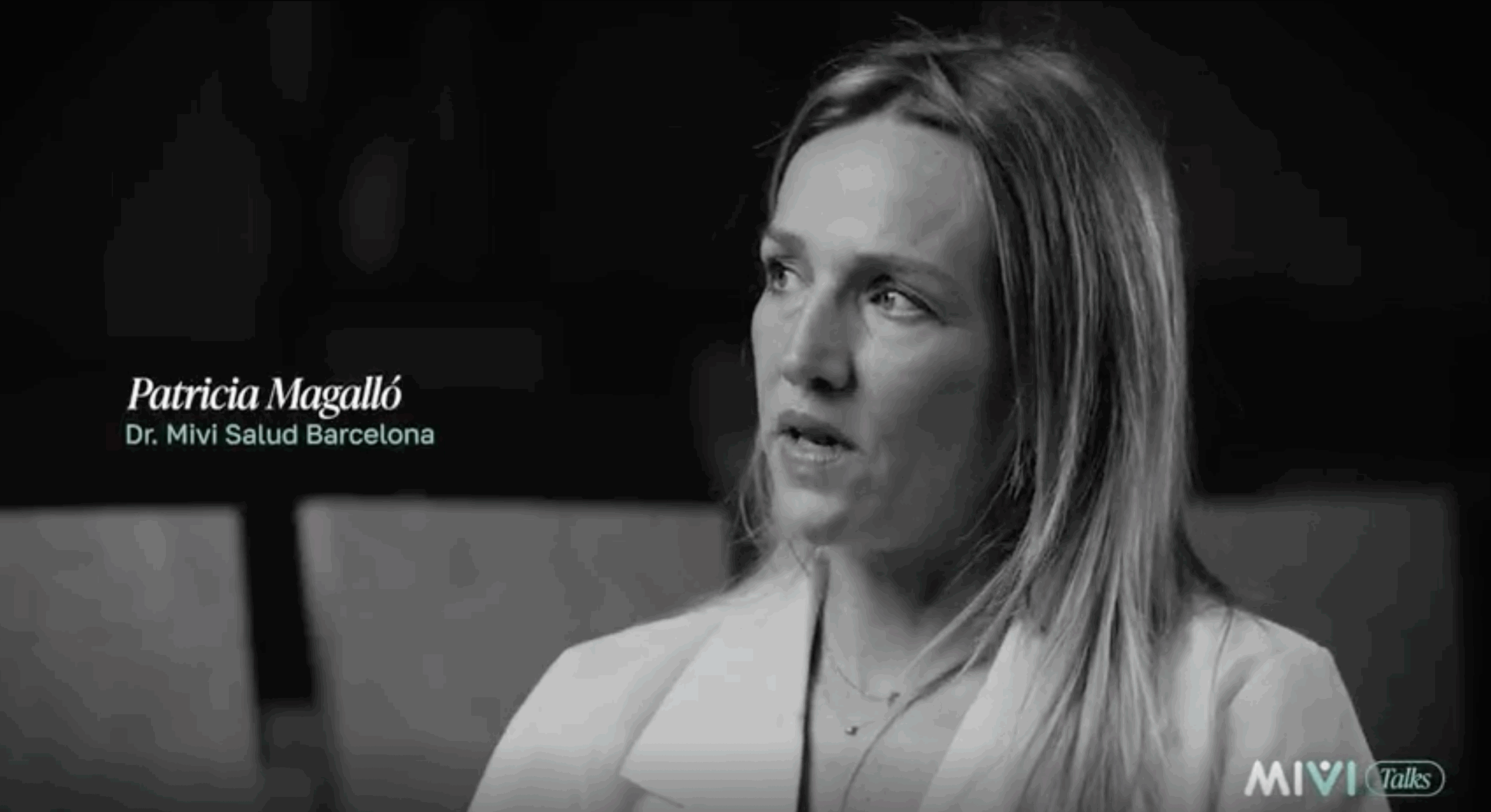
Chronic pain in women with Dr. Patricia Magalló
SPECIALIST/S
- Patricia Magalló - Doctor MIVI Health Barcelona
DESCRIPTION
It is important that women, when they have pain, do not minimize it, because pain, when it is well treated, can be controlled. Pain is a cascade that grows and if it is delayed there comes a time when it becomes chronic pain and chronic pain is much more difficult to treat.
TRANSCRIPT
Do women suffer more chronic pain than men?
Biological differences from infancy
It has been demonstrated that women are much more likely to experience pain than men. This is neither a subjective perception nor an invention. From birth to adulthood, both men and women go through different stages. However, men have a protective factor: testosterone.
In infancy, until the first menstruation, the pain threshold is similar. From that moment on, the differences begin to appear. The mere fact of having menstruation is already a source of pain that men do not experience.
Hormonal and physical changes: pregnancy and menopause
During pregnancy, women undergo hormonal and physical changes that predispose them to long-term pain. The pelvis, for example, adapts to accommodate the fetus, which can lead to later discomfort.
When estrogen production ceases at menopause, the incidence of osteoporosis also increases in women, which increases the risk of fractures and chronic pain.
Delayed consultation: a common problem
Lack of time and prioritization of others
Many women arrive late to the Pain Units. Not because they do not suffer, but because they do not prioritize themselves: they take care of their children, they work and always put others first. That is why, when they finally come for consultation, we usually go after the problem, not in front of it.
Recent cases show that there are women who have suffered pain after childbirth and have not verbalized it, focused on breastfeeding or caring for the baby. And by the time that pain is attended to, it has already become chronic.
Clear prevalence data
The prevalence of chronic pain in women is 30%. 30%compared to 21% in men. In addition, women take longer to consult, often because of the social role imposed on them: caregivers, sufferers, silent.
Beyond the biological: the impact of the social
The social and health gap
There is an evident social gap that also affects the healthcare field. Even pain professionals, with training and a gender perspective, can fall into stereotypes: “women endure more”. This is an unfair generalization that often delays diagnosis and adequate treatment.
This social bias leads to labeling female pain as anxiety, depression or somatization, when in fact they are complex, multifactorial and physical conditions.
Poorly treated chronic pain is aggravated
Pain that is not treated in time becomes chronic. Undiagnosed low back pain for one or two years affects the central nervous system: the brain assimilates it as part of the body’s normal state, and it is much more difficult to reverse.
Factors explaining why women suffer more pain
Hormonal and structural changes
From the first menstruation, pregnancy and menopause, to specific diseases such as breast cancer, women experience more critical moments that can generate pain. During pregnancy, anatomical changes in the pelvis, hips or knees can cause long-term pain.
Women also require more hip or knee prostheses at older ages, partly as a consequence of these physiological changes.
Pathologies and consequences of treatment
Breast cancer is a clear example: more frequent in women, it can cause pain due to surgery, radiotherapy, lymphedema or nerve involvement. Added to this is the psychological, physical and hormonal impact (early menopause, osteoporosis…).
The gender gap also manifests itself in health
The woman minimizes her pain and so does the environment.
Many times female pain is not openly manifested. Women do not complain because they “must take care”, “must resist”, and this leads to delaying the diagnosis. This underestimation of female pain is documented.
For example, when faced with a heart attack, women are treated later than men, because their symptoms are minimized and do not fit the “typical” male presentation.
Are there any specific protocols today?
There are no systematized protocols to encourage women to consult earlier. There is a lack of social, medical and cultural awareness. Despite the fact that women have more episodes of pain, less clinical attention is given to them.
At MIVI, we work with multidisciplinary teams that include psychologists and specialists to accompany the patient according to her vital moment.
A message to all women in pain
If a woman is experiencing pain and does not know what to do, she should not minimize it, nor should she exaggerate it.. She is not a victim, but she does have the right to ask for help. Public health care is good, and the first consultation should be done without fear.
If the pain lasts more than six weeks, or more than three months, it is necessary to consult. Because pain treated in time can avoid major complications. Do not wait for it to become chronic.
And if you know a woman who is suffering in silence, encourage her to consult. That is why the Pain Units and the MIVI Group exist.

